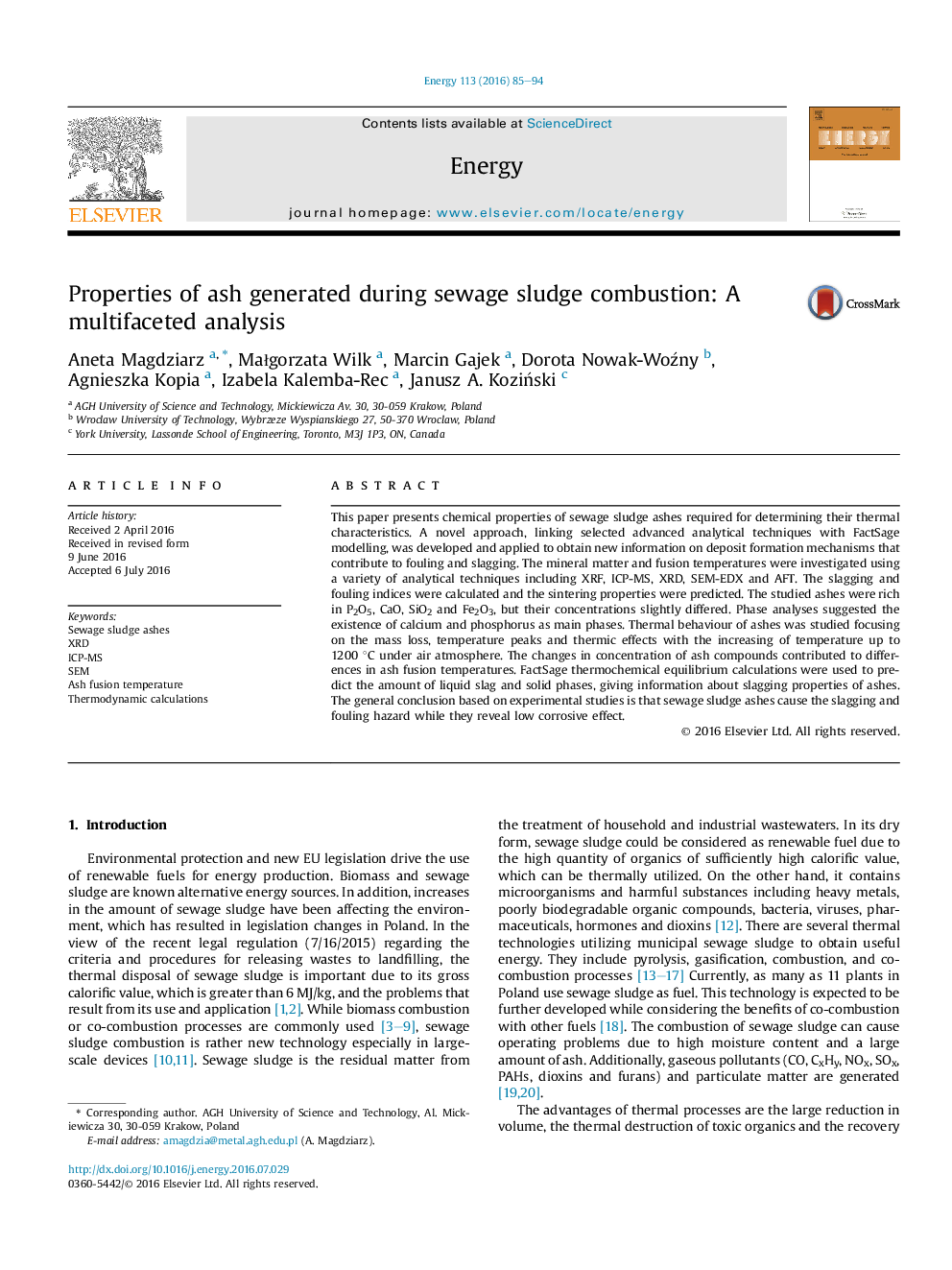| Article ID | Journal | Published Year | Pages | File Type |
|---|---|---|---|---|
| 1730723 | Energy | 2016 | 10 Pages |
•Characterisation of sewage sludge ashes were given.•Transformation of inorganic components was determined using XRD and FTIR.•The ash fusion behaviour of ashes was studied experimentally.•Empirical indices were calculated indicating slagging and fouling propensities.•Thermodynamic equilibrium calculation was used.
This paper presents chemical properties of sewage sludge ashes required for determining their thermal characteristics. A novel approach, linking selected advanced analytical techniques with FactSage modelling, was developed and applied to obtain new information on deposit formation mechanisms that contribute to fouling and slagging. The mineral matter and fusion temperatures were investigated using a variety of analytical techniques including XRF, ICP-MS, XRD, SEM-EDX and AFT. The slagging and fouling indices were calculated and the sintering properties were predicted. The studied ashes were rich in P2O5, CaO, SiO2 and Fe2O3, but their concentrations slightly differed. Phase analyses suggested the existence of calcium and phosphorus as main phases. Thermal behaviour of ashes was studied focusing on the mass loss, temperature peaks and thermic effects with the increasing of temperature up to 1200 °C under air atmosphere. The changes in concentration of ash compounds contributed to differences in ash fusion temperatures. FactSage thermochemical equilibrium calculations were used to predict the amount of liquid slag and solid phases, giving information about slagging properties of ashes. The general conclusion based on experimental studies is that sewage sludge ashes cause the slagging and fouling hazard while they reveal low corrosive effect.
